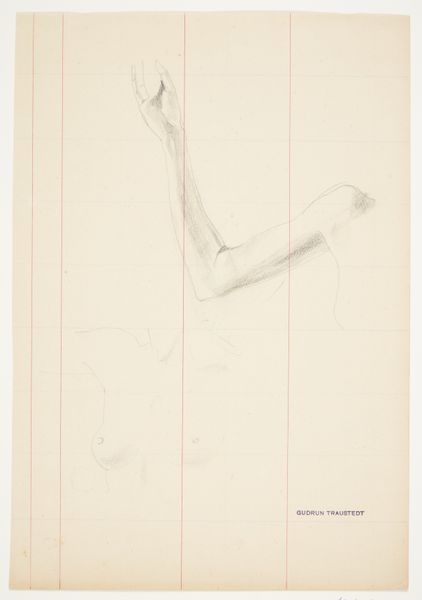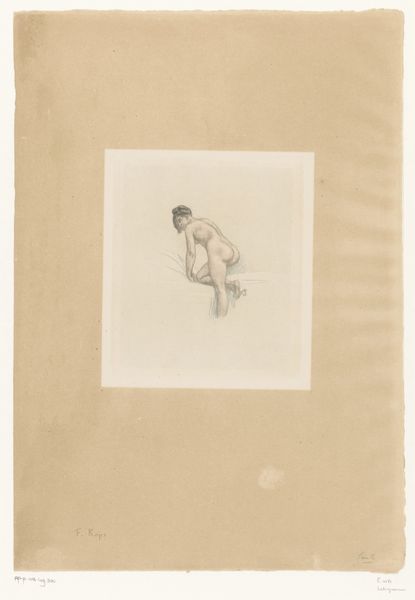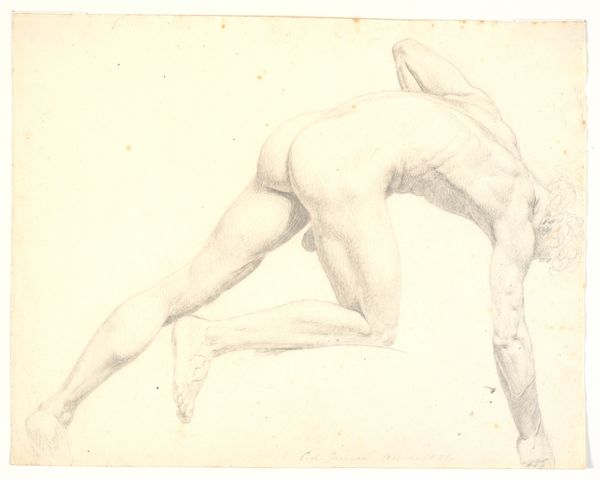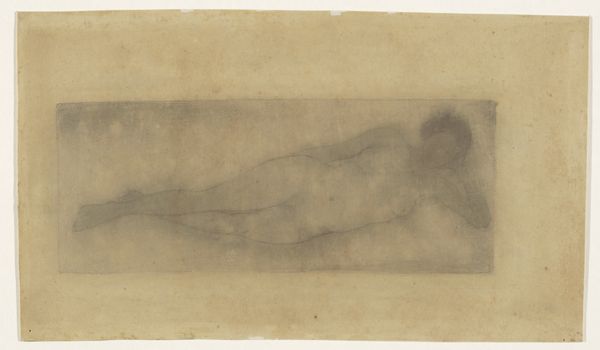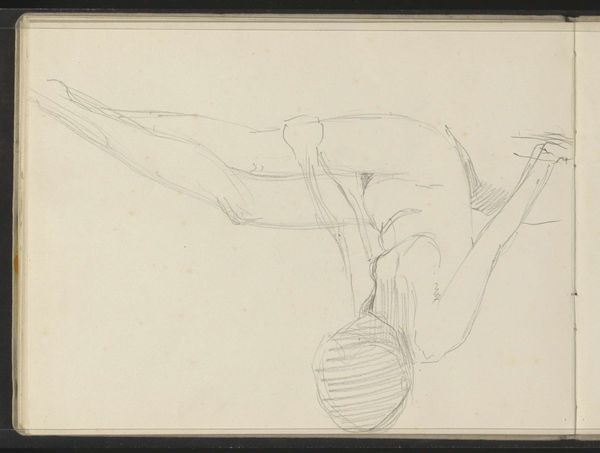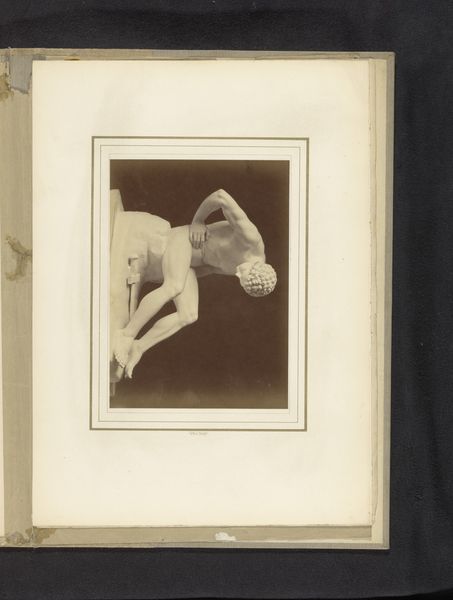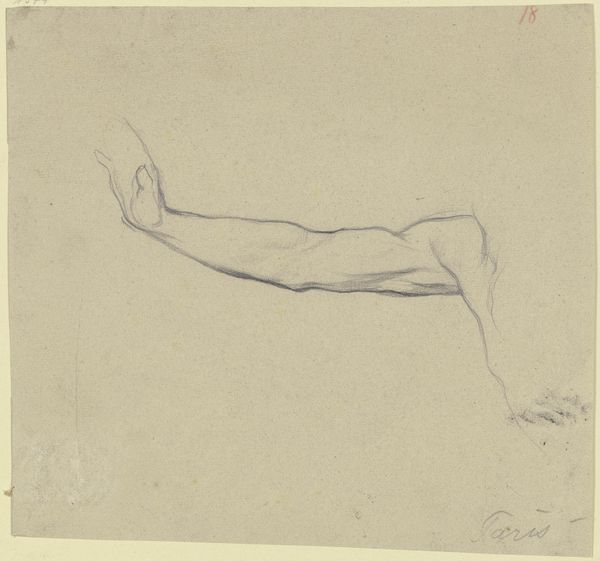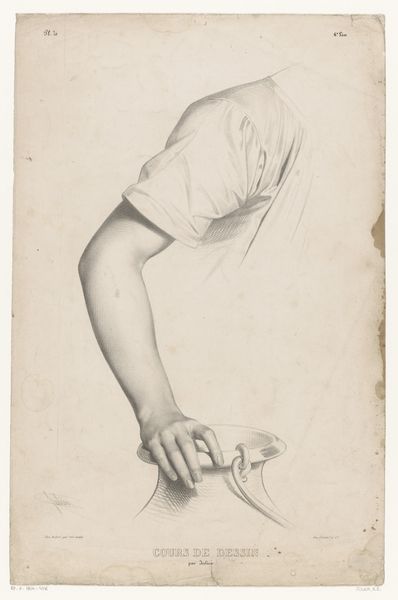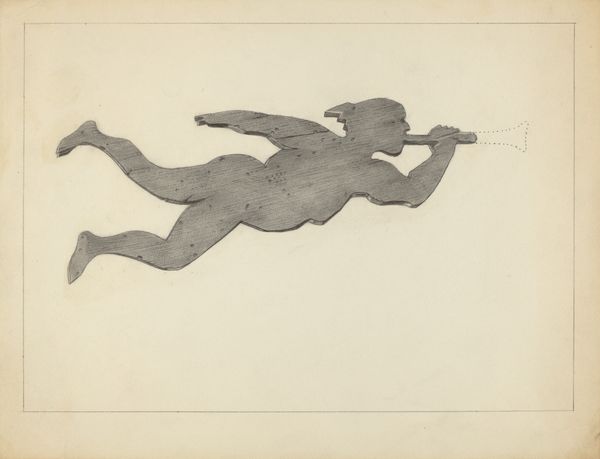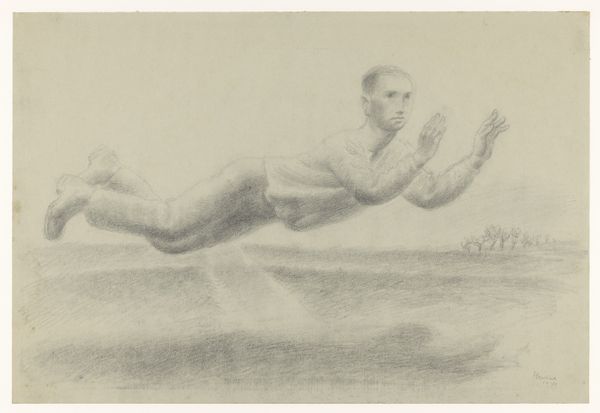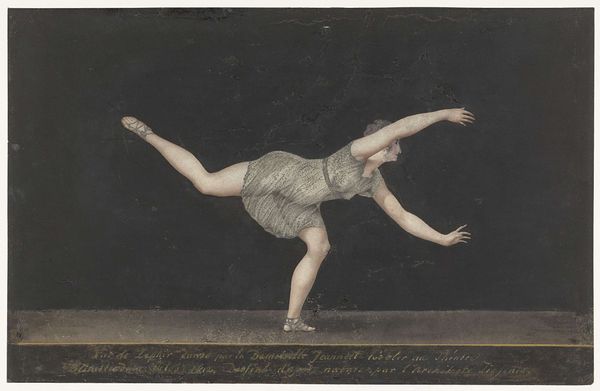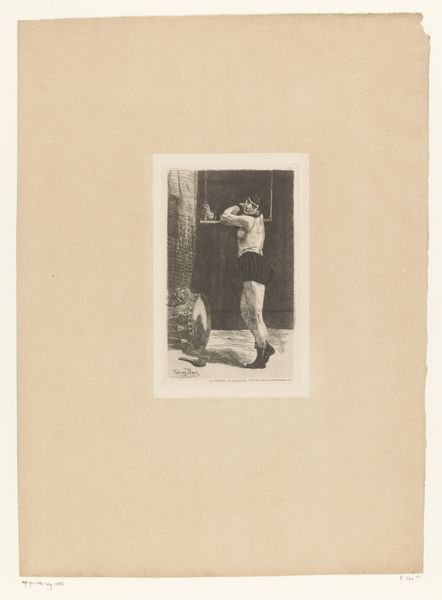
drawing
#
portrait
#
drawing
#
ancient-egyptian-art
#
ancient-mediterranean
#
miniature
Dimensions: height 83 mm, width 241 mm
Copyright: Rijks Museum: Open Domain
Curator: Let's take a moment to examine this delicate drawing. It's titled "The sculpted wooden handle of an old Egyptian spoon," and it comes to us from Willem de Famars Testas, dating back to around 1858-1860. What catches your eye? Editor: It's intriguing, almost spectral. The figure, rendered in these muted tones, gives me the feeling of witnessing a memory resurface. Like seeing a ghost gliding horizontally in an eternal swim. Curator: Absolutely, and placing this within the broader context of Egyptomania prevalent during the mid-19th century in Europe is crucial. The artist, de Famars Testas, wasn't necessarily concerned with pure replication but filtering his perceptions of ancient Egyptian artifacts through his cultural lens. This brings forth conversations around authenticity and the West's interpretation of the "Orient." Editor: It is like holding a lost poem in my hand. The lines are simple but, within that simplicity, it opens like a universe, like whispers of life along the Nile. It evokes the ancient belief systems and mythologies intertwined with everyday objects. Curator: Indeed. It also brings up questions about the purpose of such a drawing. Was it intended as a purely artistic exercise, or perhaps as a study for a more extensive work? Perhaps it's related to cataloging, making knowledge accessible to others who don't have the chance to go to Egypt. Editor: It certainly makes me consider labor and craft, thinking about the artisan who painstakingly sculpted this small but vital component of a daily item—an instrument designed for consumption turned itself into the subject to be consumed, and centuries later. It gives it a beautiful echo. Curator: Exactly, from a humble spoon handle to this careful documentation, we're looking at interconnected acts of creation, each layering meaning upon the last, reminding us of how art objects also have intersectional cultural and historical narratives. Editor: I leave it both feeling a certain lightness, with the swimmer gently floating—as well as gravity, remembering that such pieces are embedded in larger colonial, political, and socioeconomic histories. A little object makes you think.
Comments
No comments
Be the first to comment and join the conversation on the ultimate creative platform.

